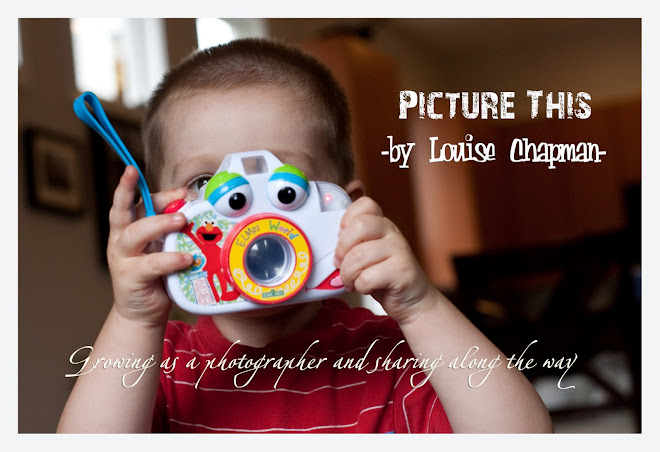Here are some ways to get better shots when you do not have natural light:
1. External flash which can be bounced off the ceiling. Try not to use direct flash or a built in flash. If direct flash, dial it down. We have a Canon Speedlite 430EX and a 580EX.
2. Shoot on aperture priority and use the lowest f-stop (in layman's terms, the f-stop is how much light is let in and when you have a lower number, it's a higher aperture, letting in more light).
3. To go with #2...one of my favourite lenses is my 50mm f/1.4 (the 50mm f/1.8 is a much cheaper option that would work well but my husband would say to invest in the better lens).
4. Use a higher ISO and deal with the noise/grain in post production. There are programs out there that deal with noise and I can't recommend what is best. I just use the noise slider in Lightroom and it seems to work ok. I have heard good things about Noise Ninja and Noiseware. As mentioned in a previous post, you can get a free 30 day trial of Lightroom and see if it works for you.
5. Shoot in RAW and you can push the exposure up in post production (again, I do it in Lightroom). I don't think I would recommend shooting in RAW if you are starting out. We have just shot jpeg's for a long time and recently switched to RAW.
6. Use a tripod or monopod if shutter speed is not high enough. The Digital Photography School says that your shutter speed denominator should be larger than the focal length of your lens. So, for example, with my 50mm lens, a shutter speed of 1/60th should be adequate. Although, I always try to keep my shutter speed at about 1/125th or faster.
7. Practice, practice, practice:)
Hope there is something helpful in there. If you have any other questions, please ask. I'm not claiming to be an expert but I've def. learned a lot over the past few years.

